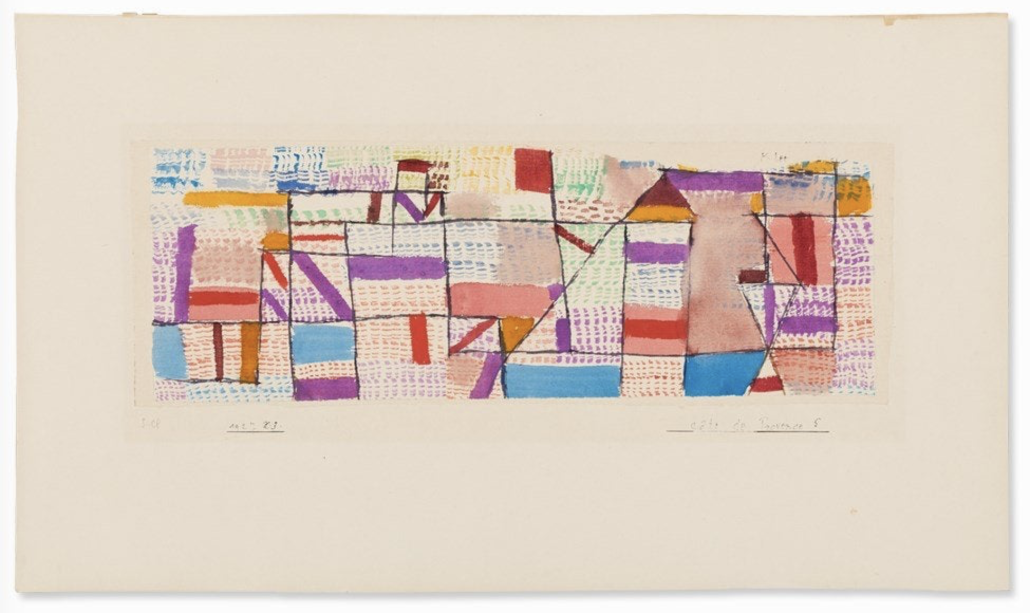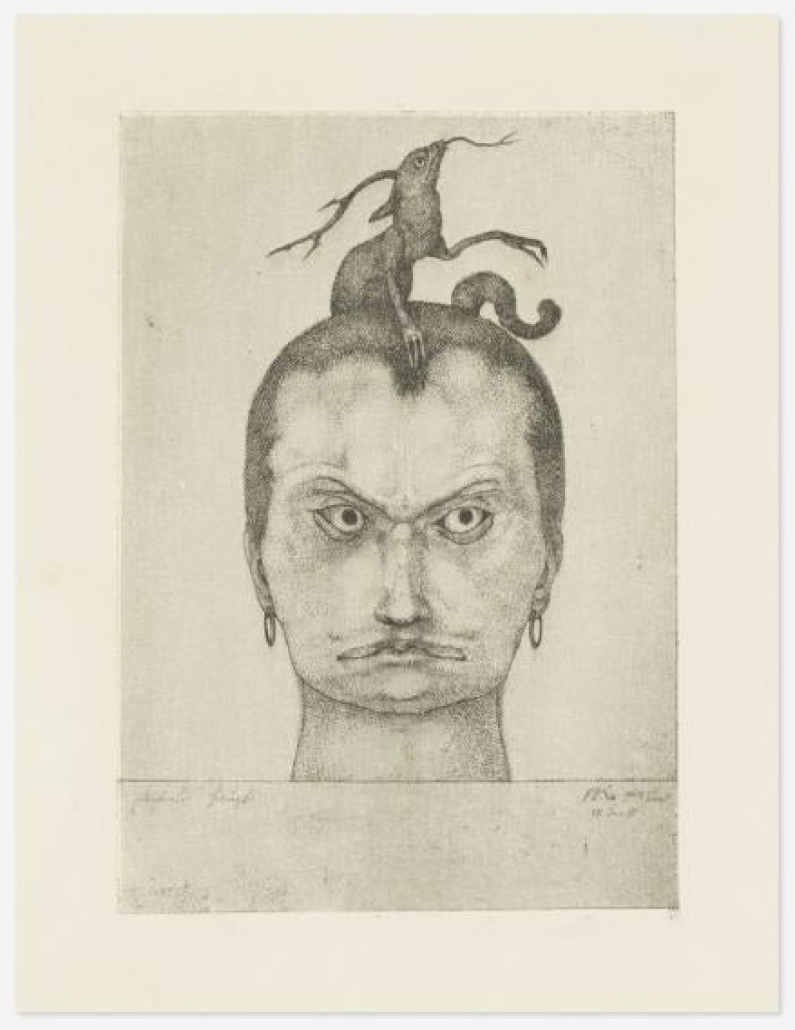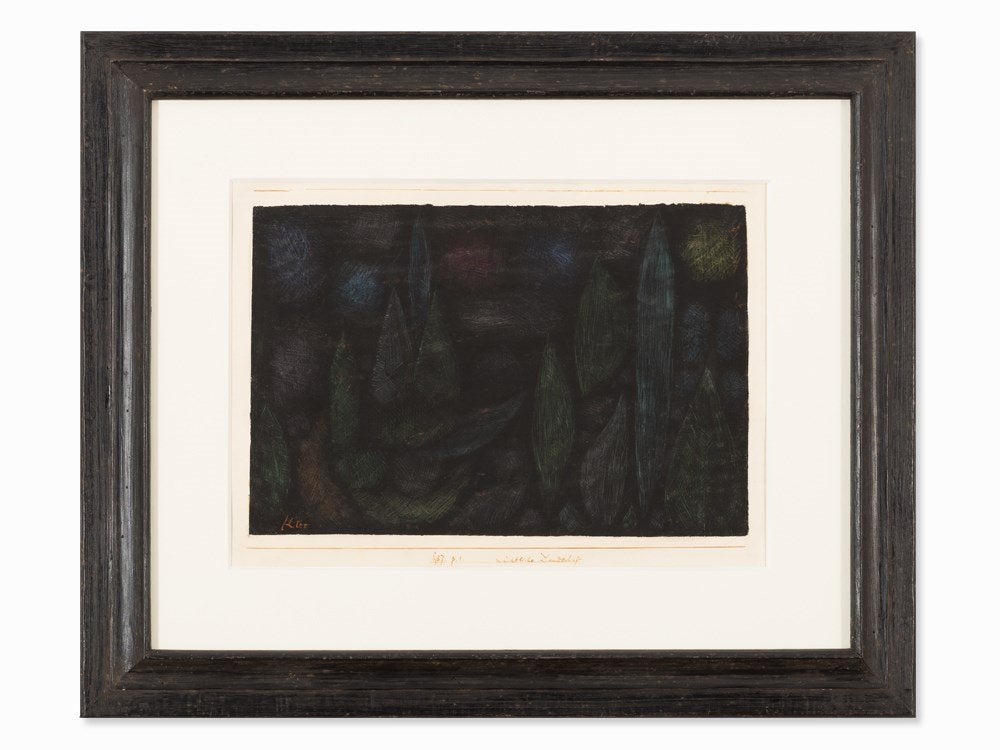
NEW YORK — Born into a family of musicians, Paul Klee (1879-1940) was one of the most acclaimed Swiss painters and printmakers of the 20th century and a central figure in the Bauhaus art school. While he embraced a career wielding a paintbrush instead of a violin bow, he played violin in his leisure time and music had a strong influence on his art.
Some of his paintings directly reference music. Those that don’t still share a structural similarity that Klee explored in his color theory. He often played with and arranged colors as if they were music notes. He is also said to have compared the ephemeral nature of a musical performance to the time spent creating an artwork.
Klee’s artworks took on a life of their own, becoming more than just works on paper and canvas. “Pictures have their skeleton, muscles, and skin like human beings,” he said in 1908.
A master of color and form, Klee was born in Switzerland but spent most of his life in Germany. He settled in Munich after marriage but was well-travelled, making repeated trips throughout the world from Italy to Tunisia to expand his art sensibilities. After early exhibitions in 1910 at the Kunstmuseum Bern in 1910 and the Moderne Galerie, Munich, in 1911, he had his breakthrough in 1920 with a major exhibition of his work at Munich’s Galerie Hans Goltz. He also was named then as a faculty member of the Bauhaus.

Johann Wolfgang von Goethe’s 1840 book, Theory of Colour, was reportedly a major influence on Klee, who excelled at choosing complementary colors in the right balance in his art. A tireless experimenter, Klee created drawings, prints and paintings that varied greatly in their style and their use of materials from chalk and watercolor to oil. He was a prolific artist, creating about 10,000 paintings and nearly 5,000 drawings in his lifetime. He is also known to have played around with engravings, lithography and sculpture.
“Klee’s art was shaped by his Transcendentalist philosophy, and his work reflects his interest in returning to the childlike nature of the self,” according to the Chicago-based auction house, Wright, which has sold several works by the artist for over $30,000 each.
Evincing Klee’s color theory explorations are works like this Cote de Provence painting, shown at the top of this page, that has a pared-down abstracted formal language but practically sizzles with color. This work is one of many that he painted of coastal cities during a year spent travelling from Switzerland, through Provence in southern France and down to Corsica. Common subject matter were sailing boats and colorful landscapes that were easily recognized for their abstract formal language and their vivid hues.
Klee was also not afraid to embrace dark and monochromatic works, especially in his later years. This was an apt reflection of society at the time, which was undergoing much political strife. Klee was one of a handful of artists the Nazis targeted, including more than a dozen of his works in its degenerate art exhibition in 1937, and whose exhibitions and activities were limited.

His late 1930s work, Nocturnal Landscape, which sold for €75,000 + the buyer’s premium in June 2015 at Auctionata Paddle 8 AG, is evocative of this period. At the same time, Klee was also battling scleroderma, which was diagnosed in 1936 when he was 57. His health quickly took a major downturn and while his condition affected his productivity, he still was able to create over 1,000 works in his final years. “During this period, against the backdrop of immense sociopolitical turmoil and the outbreak of World War II, Klee worked with a vigour and inventiveness that at times rivalled even the most productive periods from his youth,” according to the David Zwirner Gallery in New York. In Nocturnal Landscape, in particular, one can see on close inspection a pattern of fine color forms that stand out from the dark black nocturnal background, which creates a dynamic quality.

While he is perhaps best known for his paintings, prints were a key part of his oeuvre. His etching series, Inventions, which he worked on from 1903-1905, are part of his earliest forays into printmaking. The series is known for being energetic, lyrical and intimate with a touch of humor. Some of the works are pointed criticisms against society, however, such as Jungfrau im Baum (Virgin in a Tree), which shows a nude woman draped across a twisted tree, a depiction that goes against classic academic art training. “By parodying the typically allegorical treatment of women’s bodies, he expressed his alienation from the bourgeois conservatism of mainstream art and his desire to retreat into his imagination,” according to the Museum of Modern Art in New York. His etching is the total opposite of the typical romantic nude.
Klee’s work is well represented in museum collections and continues to resonate with private collectors today. While he is perhaps eclipsed by some of his contemporaries like Picasso, in terms of auction prices, his legacy as a modernist master is assured and his artworks attract a robust demand.
# # #



